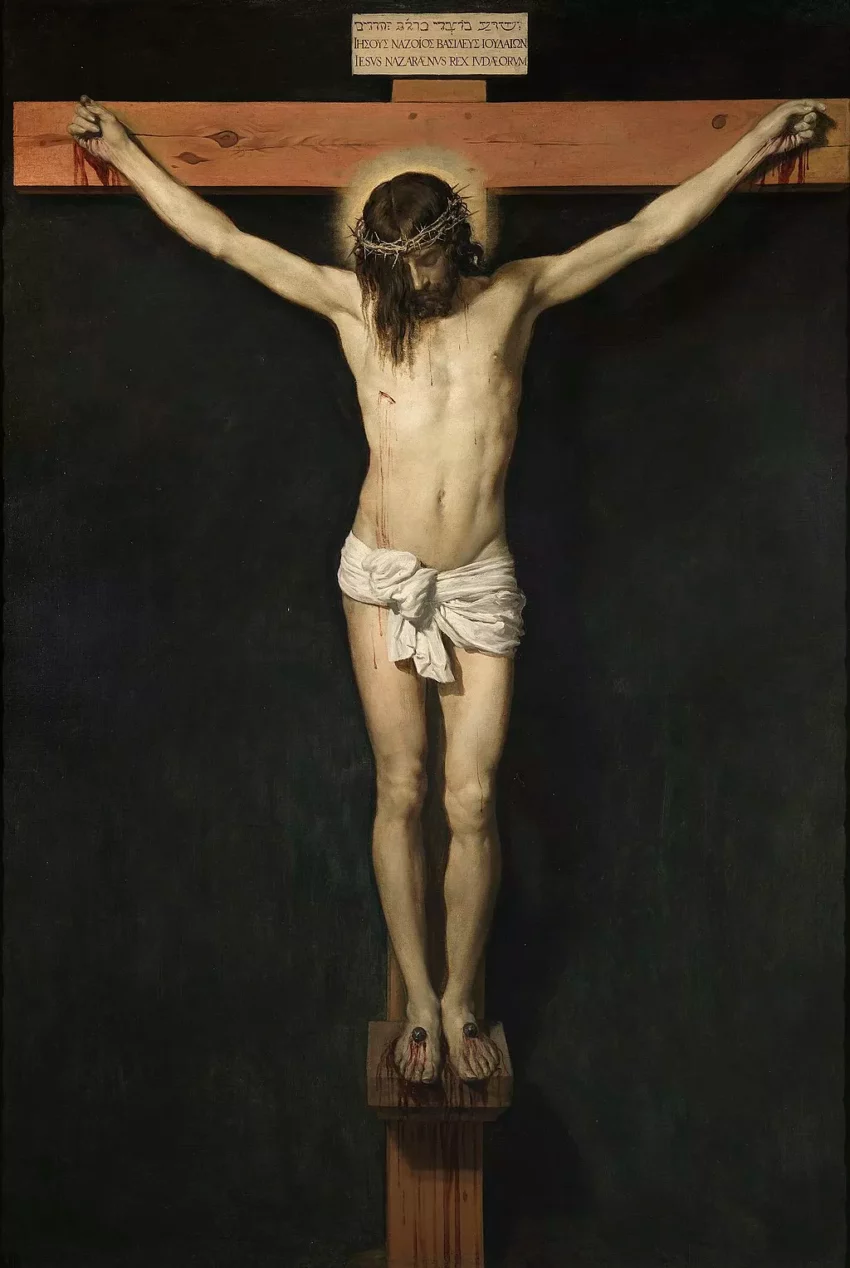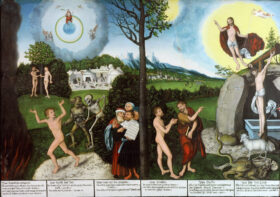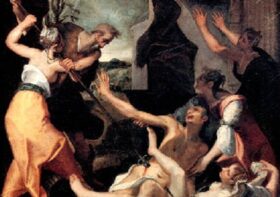The Sacred and the Profane

The Crucified Christ (1632) by Diego Velázquez
Parasha Chukat
06/19/2021
Shabbat shalom! Today’s parsha, entitled Chukat, translated “statute”, chronicles the ups and downs of Israel’s wandering from Numbers 19:1 to 22:1.
I think the text today has something to teach us about true goodness and true evil. If goodness is that which is holy, clean, and life-giving, then evil is that which is wicked, filthy, and life-threatening.
In this passage, Israel repeatedly encounters evil, some of it by their own doing and some of it imposed on them from without, in the form of four major bodily threats: disease, drought, war, and predation. By studying God’s dictates throughout these trials, we stand to gain a discernment over true goodness and true evil that transcends our natural, fallen wisdom.
The section starts with an all too familiar threat: disease. The whole of chapter 19 describes the elaborate processes by which the unclean and clean become so respectively, and as complex as it is, it’s still simpler than trying to make sense of Dr. Faucis’s various and contradictory pronouncements. A Red Heifer is sacrificed, its ashes added to water, and that water sprinkled on those who are ceremonially unclean. If one neglects the purifying water, they are willful participants in evil and are rightly severed from God’s holy community. “Repent and be baptized”, anyone? Clearly, our Creator regards bodily wellbeing as good, but not as important as a repentant heart.
The next brush with evil concerns drought. As they headed out of Paran into the wilderness, Moses’ thirsty flock started to look more and more like a mutiny, which drove Moses and Aaron to fall on their faces before Adonai. The LORD answered their prayer by commanding them to tell a rock to yield water. Moses, likely out of deep frustration, instead rebuked the people and gave the rock two, good whacks. The water pours forth, but at a cost. For the luxury of self-righteous indignation and stolen glory, Moses and Aaron were cursed with the fate of their flock; they were never to see the promised land. And here we again learn that not all that is good is equally so. Our God values health, but obedience is a higher priority.
Lesson apparently learned, we momentarily depart from the barrage of evils to instead witness the wages of sin… death. In particular, the death of Aaron. It took place after Moses pleaded with the King of Edom for passage through his land and was met with a hearty, “No can do.” So, instead, they journeyed from Kadesh to Mount Hor where Adonai made the pronouncement that Aaron was to die. Moses and Eleazar (Aaron’s son) accompanied Aaron on his march up the mountain. In the sight of saints visible, Aaron departed this world to join those invisible. And after he passed, Moses himself clothed Eleazar in his father’s priestly garments. From this we learn that Our Father sees life as good, but not to the same degree as the communion of saints or the succession of faith.
It was not long after this loss that evil revisited Israel in a specially potent form: war. First, the King of Arad laid siege to Israel and took a portion captive. In response to Israel’s prayers, the LORD gave the Canaanites over to Israel for utter destruction. Next, Sihon, the King of the Amorites, denied Israel passage through his land and sent an army against them, so Israel decimated them and took their land and possessions. This happened for a third time with Og, the King of Bashan. And while the spoils of righteous war are good, justice and covenant-keeping is clearly the higher good.
Arguably, Israel’s most notable run-in with evil came in the midst of these wars, and it concerned a threat as ancient as man: the predator. And not just any predator: a snake. Moved to wrath by the Israelis complaints about the manna, Adonai summoned fiery serpents out of the desert shadows to prey on the faithless. Many died before the people pleaded for Moses to intercede with God, a Moses likely still in the throes of grief over the loss of his dear brother. Moses brought it before the LORD who prescribed a most unlikely cure: “Make a fiery (bronze) serpent and set it on a pole, and everyone who is bitten, when he sees it, shall live.” In this one, seemingly bewildering action, Moses gave life to a revolutionary truth, namely, that salvation begins with the voluntary examination and admission of sin. Evil cannot be overcome until it is identified; until it is called out by name; until its every detail is sculpted and hoisted high for all to see. Likewise, treatment for a disease is only possible after looking at the disease long enough and hard enough to form a diagnosis. To be poisoned from a fiery serpent and to gaze upon Moses’ statue for healing is to be spiritually dead from Satan’s attack on Adam and to look up at Jesus’ on the cross, the object of God’s wrath, for everlasting life. Earthly antidotes are good, yes, but not so good as heavenly ones.
Whether we know it or not, much of the faith battle inside us, much of the culture war around us, and much of spiritual combat above us is fought, not where black meets white, but in the shifting shades between good and evil. Discernment is not only knowing what is good, but knowing exactly which good is the greatest good. It is seeing the sacred through the Father’s eyes. With that in mind, let us make a few things clear in terms of priority:
(1) The life of a preborn baby is more sacred than the comfort of his parents.
(2) The love of our neighbors is more important than our politics.
(3) The proclamation of the gospel is more sacred than public approval.
(4) The fellowship of believers is more sacred than safety from COVID-19.
(5) The protection of Israel is more sacred than diplomacy.
(6) The glory of God is more sacred than all the accomplishments of man.
If—God help us—we get these things backwards, we risk being judged exactly as Israel was judged.




Leave a Reply